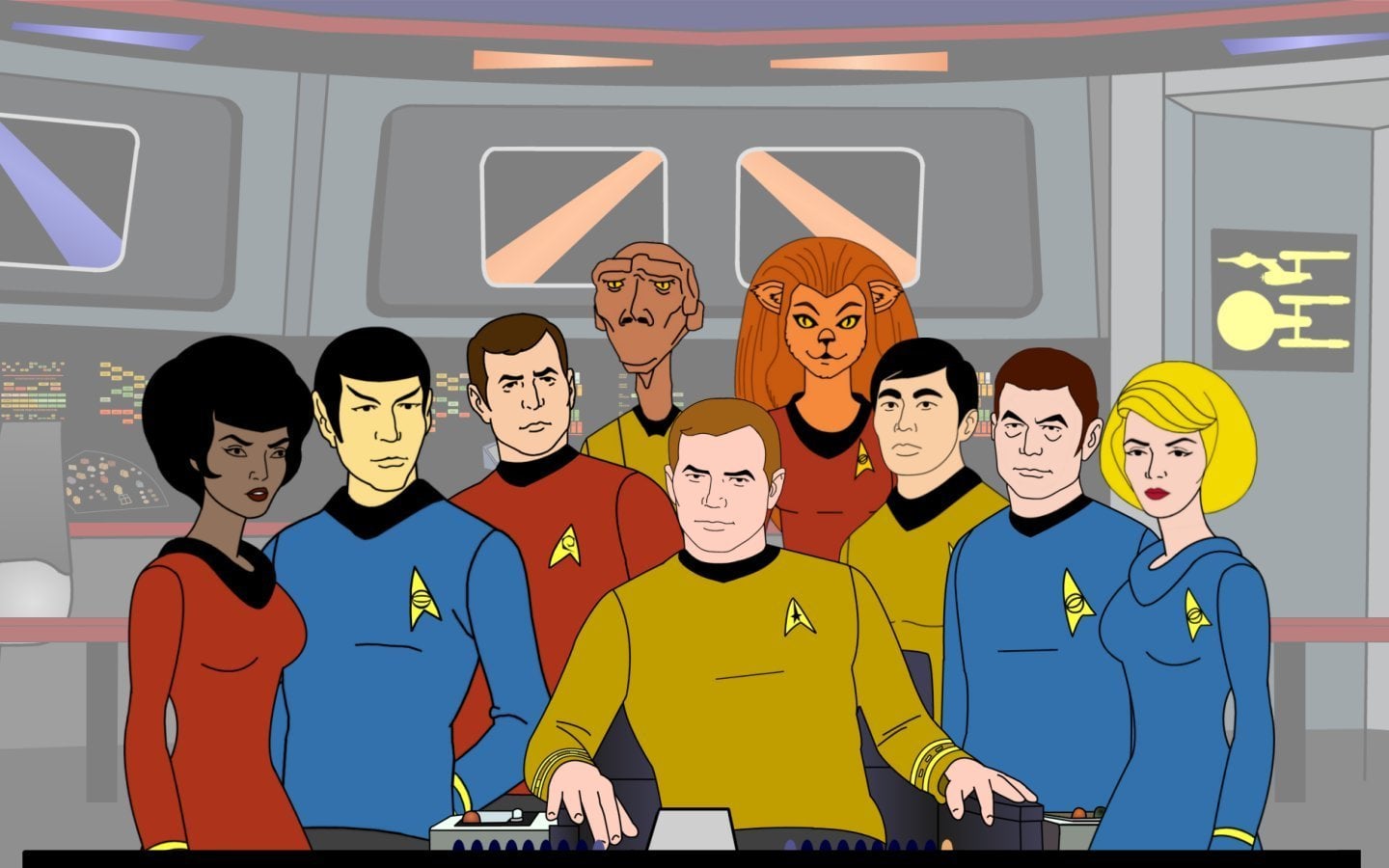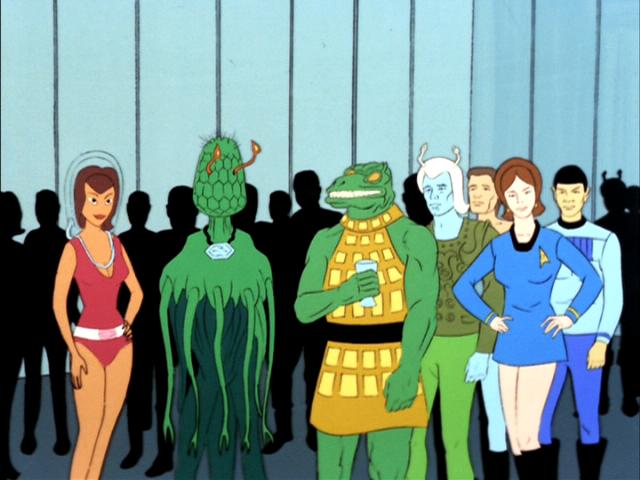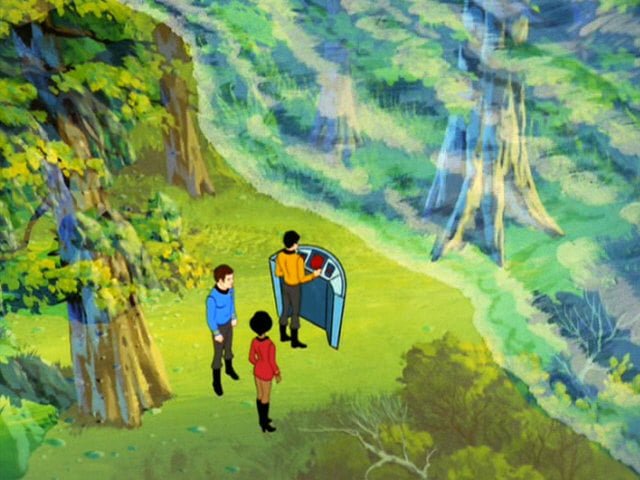
True ‘Star Trek’ fans know, of course, that the “classic” series debuted on TV today (September 8th), back in 1966. But while we all celebrate that 50th anniversary of the debut of a truly remarkable franchise, let’s not forget about another Trek series that also made its first appearance on this date, in 1973: the first ‘Star Trek’ series to win an Emmy, surprisingly rich in lore and franchise historical significance, we’re talking today about ‘Star Trek: The Animated Series.’
A quirky addition to the Trek universe four years after the original series went off the air, many long-time Star Trek writers and members of the creative teams have admitted that ‘The Animated Series’ is essentially the fourth season of the classic live-action ‘Trek’ that fans wanted but never got. Once the original series went off the air, fans were starved for new adventures with their favorite crew; Paramount worked with CBS to commit to a new show, but due primarily to budgetary concerns, the new series was set to be animated from the get-go.
Budget-friendly-yet-not-terrible cartoon production company Filmation found themselves in charge of creating the new show, and one of the company’s early plot ideas was to pair a young Starfleet cadet with each of the senior officers as kind of a “mentorship” program. Paramount allegedly even went so far as to offer ‘Trek’ creator Gene Roddenberry a sizable sum of money to relinquish creative control of the series so they could implement the idea, but Roddenberry refused. Filmation must have been really keen on the idea, as a few years later they developed it into a live-action show called ‘Space Academy.’
Even though budget was a concern, most of the original cast was brought back to the series for voice talent. At the onset, Filmation only planned on utilizing William Shatner, DeForest Kelley, Leonard Nimoy, James Doohan, and Majel Barrett, with Doohan and Barrett pulling double-duty and voicing the characters of Sulu and Uhura, respectively, in addition to their original characters of Scotty and Nurse Chapel (again, respectively). Nimoy refused to perform in the series unless Filmation brought back Nichelle Nichols and George Takei, citing their importance to the show as characters of ethnicity; Filmation releneted, leaving only Walter Koenig and his character, Chekhov, out of the series. Don’t feel too bad for Walter, though; through ‘The Animated Series,’ he became the first principal ‘Trek’ actor to write an episode of ‘Star Trek’ when he penned “The Infinite Vulcan.”
The occasional guest-star popped up on the series as well, including the voice talents of Mark Lenard as Sarek, Stanley Adams as Cyrano Jones, and Roger C. Carmel as Harry Mudd. Two new characters were introduced for the series, largely based on the fact that animated these characters was infintely cheaper than trying to produce their looks in live-action: the Edosian three-armed, three-legged Lieutenant Arex (voiced by Doohan) and the feline-looking Caitian Lieutenant M’Ress (voiced by Barrett). Only 22 episodes of the series were produced; 16 of those aired as the first season, and the final six episodes were contained in a shortened second season. The series took place during the Writers Guild of America strike in 1973, but due to a loophole in the Guild’s contracts that granted animated series an exemption from the strike, many high-profile writers were able to contribute to the series and its episodes.
Quite a few unique and original ideas were originated in ‘Star Trek: The Animated Series,” including a few facts now accepted as long-standing truths in the Trek universe. One of the most prominent may be the establishment of Captain James Kirk’s middle name as “Tiberius;” prior to this series, Kirk’s middle name was only ever referenced as simply “T.” The USS Enterprise shown in this series, accepted as the “original” NCC-1701, actually featured a room that appears to be a holodeck; called the “Rec Room,” it appeared in only one episode, but the similarities were clear.
A long-standing question from fans has been: is the show actually, officially canon? This has been a source of debate for pretty much as long as there has been an animated series; initially, the show was completely designed and intended to be taken as the “next step” of the Star Trek universe, but as the franchise grew in the 1980s and beyond, Roddenberry and the creative teams backed off that assertion and “decanonized” the series, going so far as forbidding any aspect of the series to be used in or referenced by any novels, comics, games, etc. Finally, in 2007, ‘Star Trek: The Animated Series’ was reaccepted by the Star Trek overlords as “official” canon, where it remains today.
It’s a fun piece of ‘Star Trek’ history, and one that any true Trekkie/Trekker should be familiar with!
If Tony Schaab had a Mega Blaster for a hand and a robotic dog named Rush that turned into a Hoverboard, you’d better believe that he’d spend all his time fighting Dr. Wily and his crazy mechanized inventions too! A lover of most things sci-fi and horror, Tony is an author by day and a DJ by night. Come hang out with Tony on Facebook and Twitter to hear him spew semi-funny nonsense and get your opportunity to finally put him in his place.



